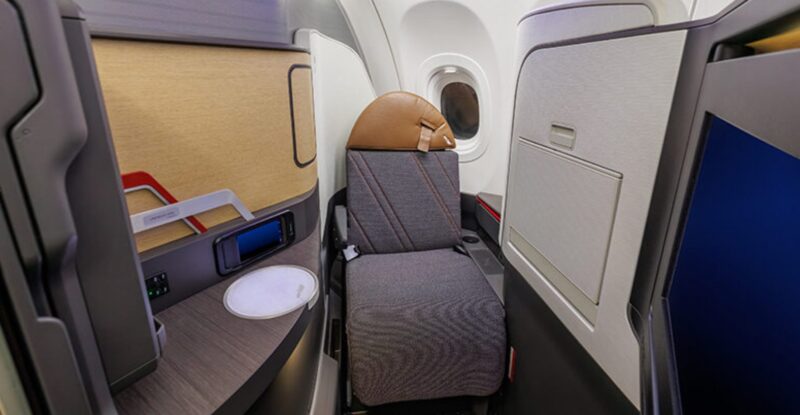American Airlines’ premium evolution has taken another major step forward. On 22 October, the carrier’s first Airbus A321XLR finally landed at its Dallas-Fort Worth hub, more than a year behind schedule.
Originally due in July 2024, the 155-seat aircraft sat idle in Europe for many months thanks to a supply-chain crunch. Its arrival from Hamburg, at last, signals the next phase of American’s multiyear plan to unify its Flagship Suite hard product across the fleet.
One day after taking delivery of the A321XLR, American confirmed plans to retrofit its Boeing 777-200ERs with the same design language. The timing neatly links its narrowbody and widebody strategies, following May’s debut of the Boeing 787-9 Premium (787-9P), the first aircraft to showcase the new generation of suites up front and Premium Economy seats.
For an airline long criticized for inconsistent cabins, this is the clearest expression yet of a cohesive premium identity.
The narrowbody that took its time
In 2019, American ordered 50 A321XLRs at the Paris Air Show, positioning the type as a bridge between domestic transcon routes and future “long-thin” transatlantic missions. With a range of up to 4,700 miles, the XLR opens opportunities from the U.S. East Coast to secondary European markets — but for now, it will start where the brand’s premium reputation was built: the hotly competitive JFK–LAX corridor.
This marks the first A321XLR operated by a U.S. airline and the only one worldwide with a true three-class layout — Flagship Suite business class, Premium Economy, and Main Cabin. It replaces the decade-old A321T, which entered service in 2014 with Transcontinental First, Business, and Main Cabin. That twinjet’s dedicated First Class, with outward-facing herringbone seats based on Safran Cirrus, and Collins Diamond recliners in Business, no longer fits American’s simplified premium model.
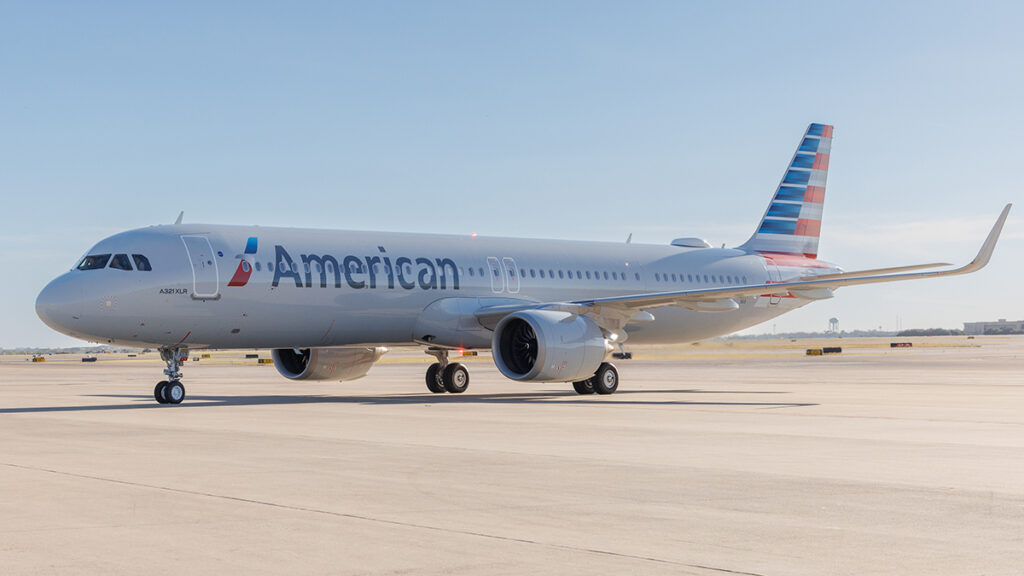
Flagship Suite Business: widebody comfort, narrowbody footprint
Up front on the A321XLR are 20 Flagship Suite business class seats arranged 1-1. The platform, seemingly Collins Aerospace Aurora, features closing doors and a fully flat bed.
Each suite also boasts a 17″ 4K touchscreen as part of the Thales AVANT IFE system, plus Bluetooth audio, universal AC and USB-C (60W) power, and wireless charging. The Viasat-powered inflight connectivity will be free beginning in January as the free Wi-Fi model is being adopted by most US carriers.
Ten rows of 1-1-configured seats means 20 seats in total.
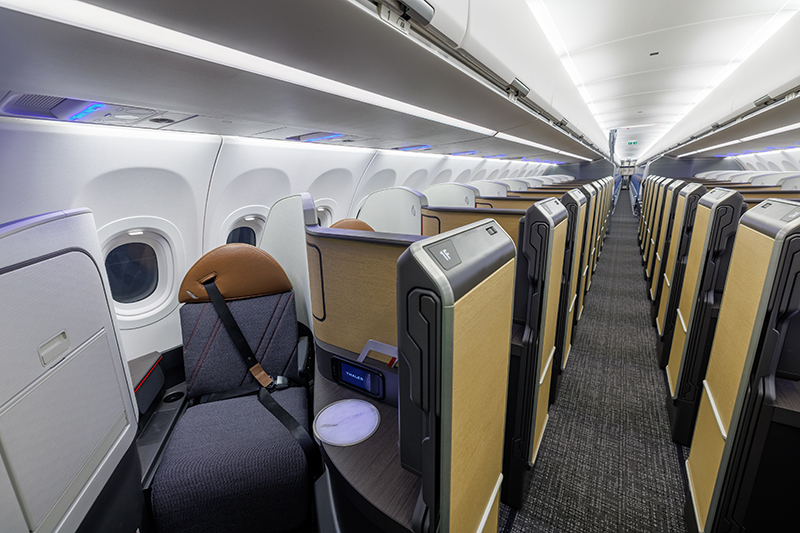
The design is unmistakably premium, but the single-aisle real estate presents challenges to the hard product at the pointy end of the plane. An inward facing herringbone, the suites face away from the window and limit the view outside.
They also look snug, a reminder that we’re still in a single-aisle tube. There’s no “studio” front-row layout (such as found on Americans 787-9P or indeed, in perhaps a better comparison, the Mint Studio on JetBlue’s A321LRs; instead every passenger gets the same compact pod.)
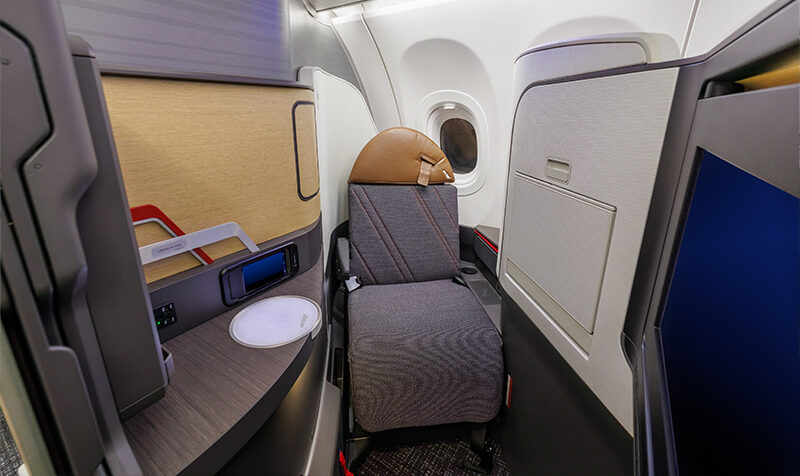 Premium Economy: familiar comfort done right
Premium Economy: familiar comfort done right
Behind Flagship Suite business are 12 Premium Economy recliners arranged 2-2, and believed to be based on Recaro’s R5 platform (though not yet confirmed by American).
Each seat features an enhanced winged headrest for increased privacy, calf and footrests, wireless charging and both AC and USB-C power outlets. The seatback IFE screen is 4K and sized 13.3″.
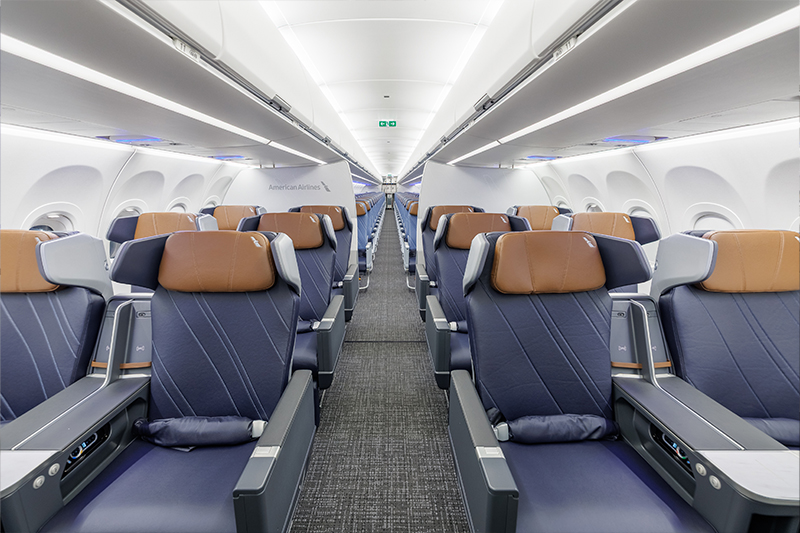
American upped the ante for Premium Economy on its new 787-9P, and its introduction of PE on the A321XLR shows it’s serious about product consistency.
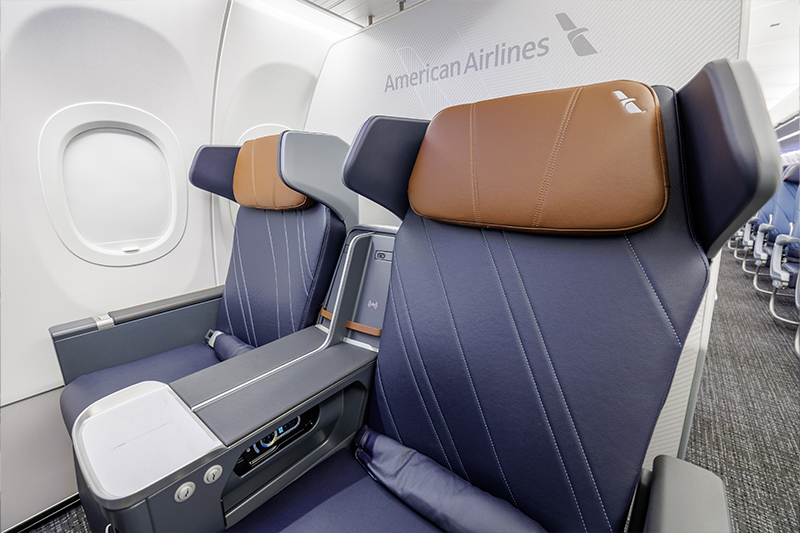
Main Cabin: familiar yet upgraded
The Main Cabin features 123 slimlines in a standard 3-3 layout, each with 18 inches of width, 31 inches of pitch (36″ in exit row 15), an 11.6″ 4K screen, Bluetooth pairing, and AC/USB-C power.
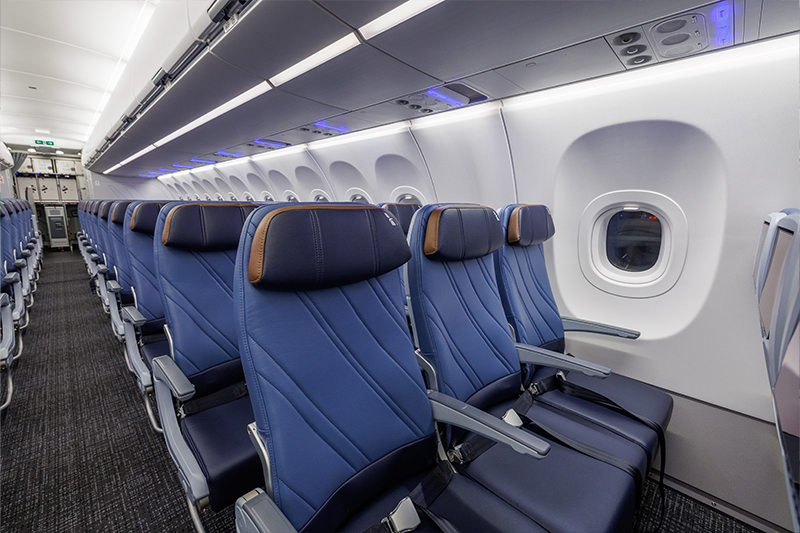
From Transcon First to unified Flagship
Your author was aboard Iberia’s A321XLR world inaugural earlier this year, and American’s configuration feels most comparable to that of its oneworld partner including a similar herringbone geometry, albeit with a three-class offering including PE as opposed to Iberia’s two cabin classes.
Neither Iberia nor Aer Lingus (also now flying XLRs) offers a true Premium Economy cabin; American’s is the first to do so.
Routes, pricing, and rollout
American’s inaugural A321XLR flight — AA 3 from JFK to LAX on 18 December — will mark the aircraft’s service debut, followed by the return leg, AA 4 from LAX to JFK. The aircraft type will operate these transcons first before being deployed at the carrier’s Northeast hubs in Philadelphia, Charlotte, and New York JFK to also support transatlantic “long-thin” routes later that year, as new airframes arrive.
Launch fares tell the premium story clearly: Main Cabin $379, Premium Economy $1,050, and Flagship business class $1,850. Flagship is already sold out for the inaugural — proof that after years of anticipation, passengers are ready to see what the new narrowbody Flagship experience feels like.
Soft product remains largely the same
The A321XLR introduces the same Flagship Suite soft product that rolled out with the 787-9P: multi-course meals with curated wines, refreshed amenity kits, and upgraded pillows and duvets. On the ground, business class passengers will have access to the Greenwich Lounge at JFK, featuring elevated dining and signature cocktails.
Having flown the 787-9P inaugural back in May, I was impressed by the cohesion of the hard and soft experiences, though not everything was flawless. Some suite doors were temporarily disabled due to certification snags, and the crew had to work around the new hardware. That experience sets a benchmark for what to look for on the A321XLR: will the smaller footprint feel as seamless in service?
The 777-200ER joins AA’s Premium Push
Hot on the heels of the A321XLR debut, American confirmed plans to retrofit its 41 Boeing 777-200ERs, giving them the same premium focus. Each aircraft will receive a nose-to-tail interior refresh, adding more lie-flat and Premium Economy seating — about a 25% increase in premium capacity — along with a new seatback entertainment system. The 777-200ER does not include First Class, making it the logical next platform for the Flagship Suite.
Specific seat counts haven’t been released yet, and American says details will follow as retrofit work begins. But the direction is clear: fewer total seats, more premium density, and product continuity with the 787-9P and A321XLR.
PaxEx Hot Take
As someone who flew the 787-9P inaugural earlier this year, and who hasn’t missed an AA new cabin or aircraft inaugural in decades, I can see the through-line clearly. Though not the step change that was American’s Business Class product when introduced in January 2013 on the 777-300ER, the 787-9P set a new bar for American’s premium ambition, even with a few early hiccups. Now, the Flagship Suite experience moves to a single-aisle platform and a more optimized space.
I’ll be aboard the 18 December inaugural, sampling both Flagship Suite business and Premium Economy, eager to see whether the comfort and polish of the 787-9P translate to a single-aisle fuselage. Initial PR impressions suggest the continuity is there — the same materials, the same IFE tech, and the same elevated vibe. But narrowbodies magnify every inch, and the true test will be how those snug, window-averse suites feel once the doors slide shut at 35,000 feet.
Related Articles:
- American Airlines’ 787-9P ups the ante for Premium Economy
- Flagship Suite Preferred impresses on American 787-9P inaugural
- Collins breaks 45-degree barrier for side-on Aurora inward herringbone
- Taking comfort in small comforts on American’s 9-abreast 787
- Press Release: American brings mainline comfort to RJs
All images credited to American Airlines




